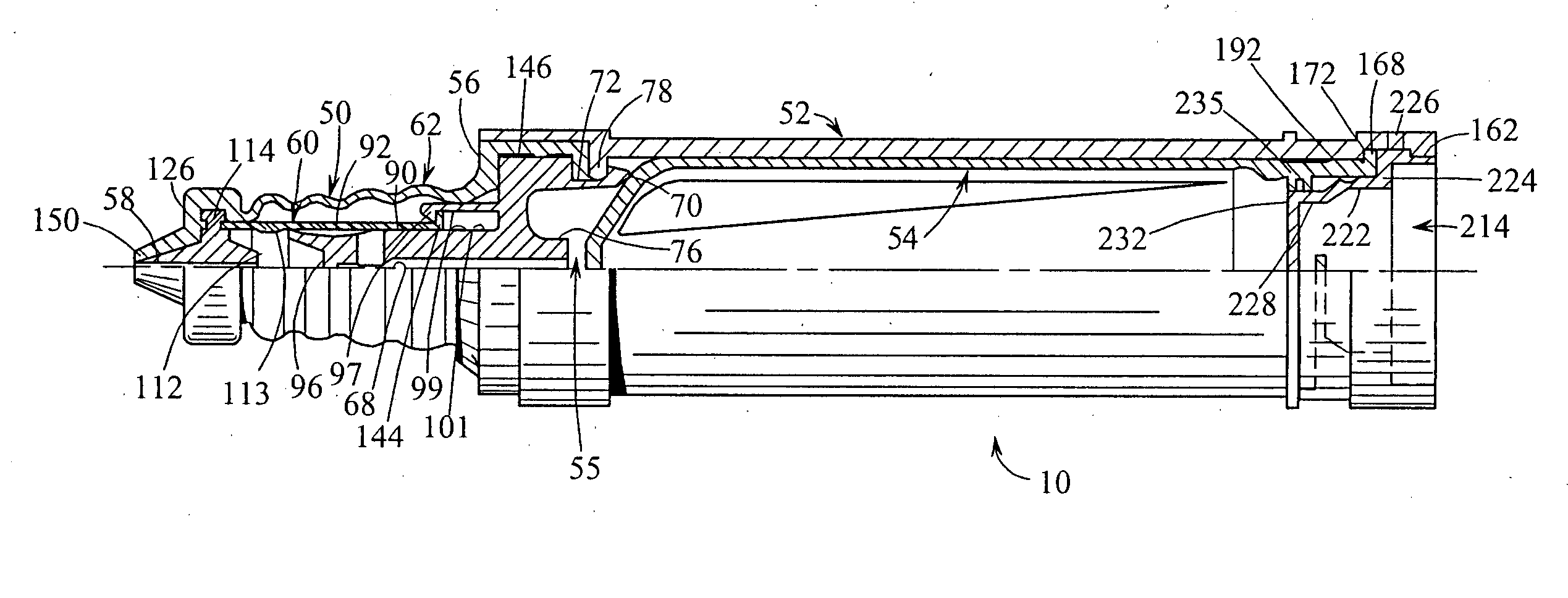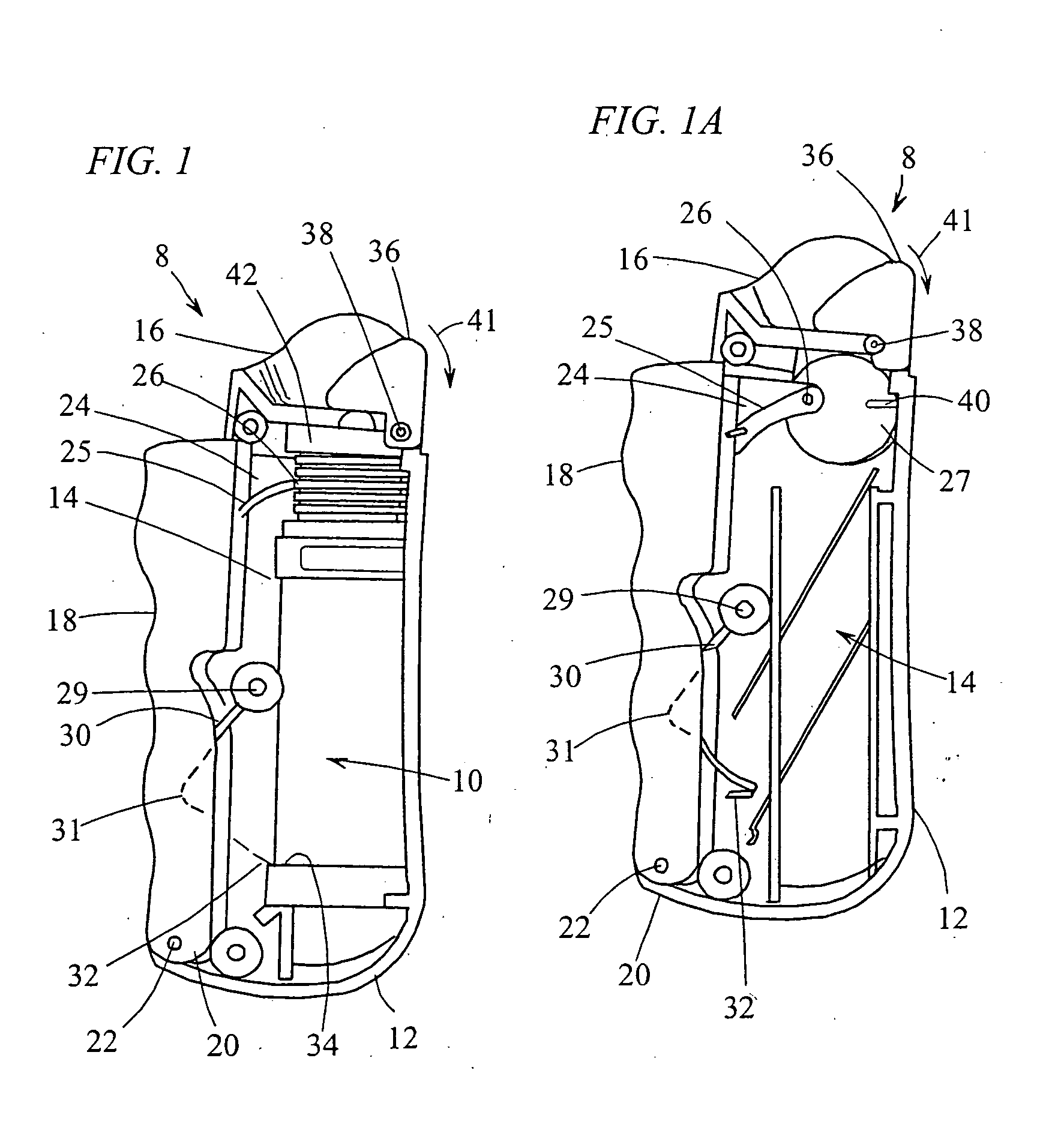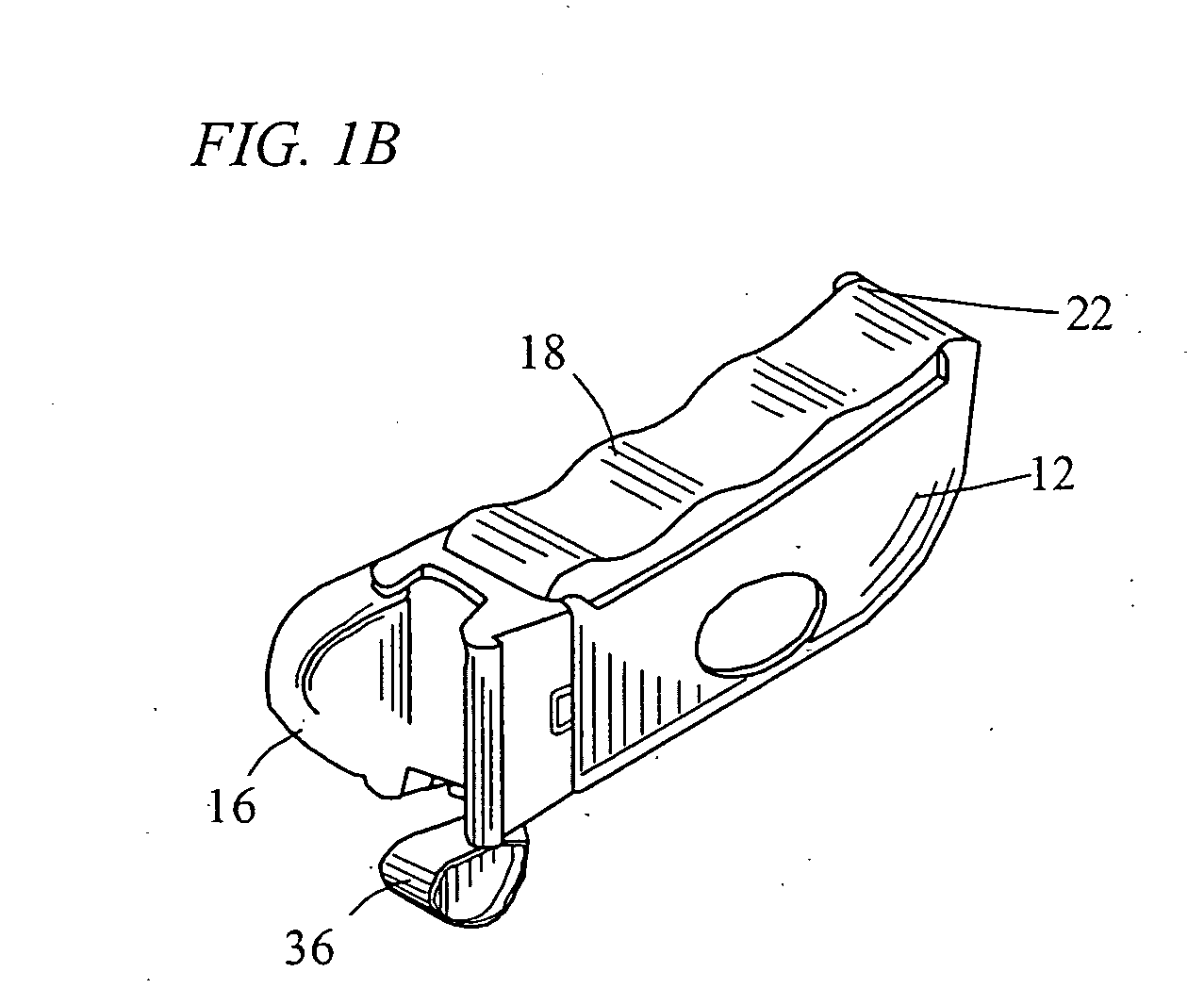One of the drawbacks associated with typical prior art fluid dispensers is that the fluid chamber(s) are not maintained in a substantially airless condition throughout the storage,
shelf life and / or usage of the dispenser.
For example, the nozzles and / or valves used in typical prior art dispensers frequently are incapable of maintaining the dispenser in a hermetically sealed condition.
In addition, such nozzles and / or valves frequently allow vapor loss therethrough either during the storage,
shelf life or usage of the dispensers.
Another drawback associated with prior art dispensers is that the materials of construction may undergo
creep that, in turn, causes seals formed within the dispensers to leak.
As a result, the dispensers are frequently subjected to substantial differential
thermal expansion and / or contraction that, in turn, cause the materials of construction to undergo
creep.
The seals and other components of such prior art dispensers typically are not designed to address such
creep, and as a result, the dispensers develop leaks or otherwise allow air ingress and / or vapor loss when subjected to such long periods of storage or varying atmospheric conditions.
For example, some
polyethylene dispensers have been known to lose between about 10% to about 25% of the weight of their contents during storage.
Such
weight loss is believed to be due to vapor loss from the medicament or other fluid-containing chambers through the
polyethylene walls of the dispensers and / or through leaks otherwise created in the seals or other structural interfaces of the containers.
Vapor loss and / or air ingress is particularly problematic for dispensers containing medicaments, such as pharmaceutical preparations or vaccines, because they tend to dilute each predetermined dosage of the medicament dispensed from the container, and / or cause the dispenser to dispense inconsistent concentrations of medicament from one
dose to the next.
Yet another
disadvantage associated with prior art dispensers is that because they cannot reliably maintain the medicament or other substance contained therein in an airtight condition, they cannot be used for either
multiple dose applications or
preservative-free formulations.
The use of single
dose dispensers can be substantially more expensive than
multiple dose dispensers.
In addition, the preservatives used in many medicaments, such as pharmaceutical preparations and vaccines, can cause adverse reactions in patients and / or dilute the effect of the medicament on the patient.
Another drawback of prior art dispensers is that the
ullage or “
dead space” inherent in such dispensers allows
sediment build-up.
Another drawback associated with many prior art dispensers is that they can only dispense the medicament or other substance contained therein in an upright or other single orientation.
This drawback prevents such dispensers from being used effectively in other orientations, such as upside down.
In addition, because such dispensers do not maintain the medicament or other substance contained therein in an airless condition, they cannot be used in
low gravity environments, such as
outer space.
Various difficulties can arise with respect to properly applying medicament to the eye.
For example, many people encounter difficulty in applying drops to their eyes.
The eye is a very sensitive body part and individuals find it difficult to control reflexive blinking when applying drops thereto.
Also, some users have trouble positioning the tip of a
dropper bottle over the eye.
Others have difficulty holding a
dropper bottle steady or encounter difficulty in squeezing a
bottle to apply a proper quantity.
For example, when eye drops are applied to the surface of the eyeball, blinking and natural tear flow combine to dispel and / or dilute the medicament thereby limiting its effectiveness.
Moreover, some medicaments can cause “red-eye” if delivered directly to the
cornea area of the eyeball.
One drawback associated with such dispensers is that their cost can be more than otherwise would be desired.
Moreover, even those who can afford such dispensers may forgo the extra features in favor of a less costly alternative.
Another drawback associated with these dispensers is that they can be bulkier than dispensers without such features, thereby making them less convenient to transport (e.g., carry in a pocket, ship, etc.) than is desired.
Another drawback associated with these types of dispensers is that they are limited in regard to the amount of medicament (or other fluid) that is able to be stored in the dispenser.
Although most (if not all dispensers) suffer from this drawback, the cost of certain dispensers may make it impractical to throw them away when empty.
In many of these dispensers, the chamber is not readily accessible to the user, and consequently, impractical to refill.
This solves the refill problem; however, the actuation mechanisms on such dispensers are less convenient to use than is currently desired.
Another drawback associated with many of these types of dispensers is that a
vacuum pump is needed in order properly fill and cap the chamber without
spillage.
 Login to View More
Login to View More 


